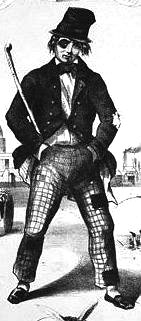Venue Type & Location
Overview
Address: 440-448 Bay St. (pp.71)
The Toronto City Directory 1924. Might Directories Ltd. 1924. Toronto Public Library.
archive.org/stream/torontocitydirectory1924#page/n11/mode/2up
Shea's Hippdrome
The next "movie palace" that opened in Toronto was Shae's Hippodrome on Bay St., north of Queen.[...]
Two Ontario-born brothers, Jerry and Michael Shea were the enterprising businessmen who built the theatre, at a cost of $245,000, an enormous amount of money in 1914. The brotehrs were later to relocate their residences to Buffalo, New York, where they eventually owne twenty0three theatre in the Buffalo area, as well as three in Toronto.
When the Hippodrome opened on April 27, 1914, it was the largest vaudeville house in Canada. It contained 3,200 seats, evenly divided between the auditorium and the balcony. The Hippodrome's enamelled white-brick, terra cotta facade dominated Bay Street, with only the west facade fo the Old City Hall across it being more impressive. On the north and south corners of the theatre's east facade were copper-topped towers. The massive marquee soared forty-six feet above the entrance, and its lobby was the large the city at the time. To reduce the time people spent in the ticket lines, sales booths were located on both sides of the lobby.
On the evening the Hippodrome opened, the feature film was Run for Cover, starring James Cagney. The theatre's auditorium contained intricate plaster mouldings that were painted ivory and gold. The walls and ceiling were decorated in gold and grey. The ceilings contained huge panels that created a massive dome. The twelve opera boxes had polished brass railings. [...]
In 1924, Shea's Hippodrome presented a new marvel: the "phonofilm", which combined the media of raido and moving pictures to create a "talkie."
In 1926, the Hippodrome was renovated. A Wurlitzer organ was installed, at a cost of $50,000, and the famous organist Roland Todd was hired to perform on the grand instrument.
In 1957, as the attendance of movie theatres began to lag, they demolished the great theatre. Theatre's organ was sold for than $500 and relocated to Maple Leaf Gardens. Today, it is in Casa Loma. The site of Shea's Hippodrome is now a part of Nathan Philips Square in front of city hall.
Taylor, Doug. "Shea's Hippodrome". Toronto Theatres and the Golden Age of the Silver Screen. The History Press, 2014.
books.google.ca/books?id=zHyACQAAQBAJ&pg=PT28&lpg=PT28&dq=Shea's+hippodrome&source=bl&ots=BWpV3V9pn0&sig=V18EmYYV_Gw7mmV2lsH9EYTZ_Jo&hl=en&sa=X&ved=0ahUKEwignOqAxebTAhVq2IMKHZT6DSs4ChDoAQgzMAU#v=onepage&q=Shea's%20hippodrome&f=false

